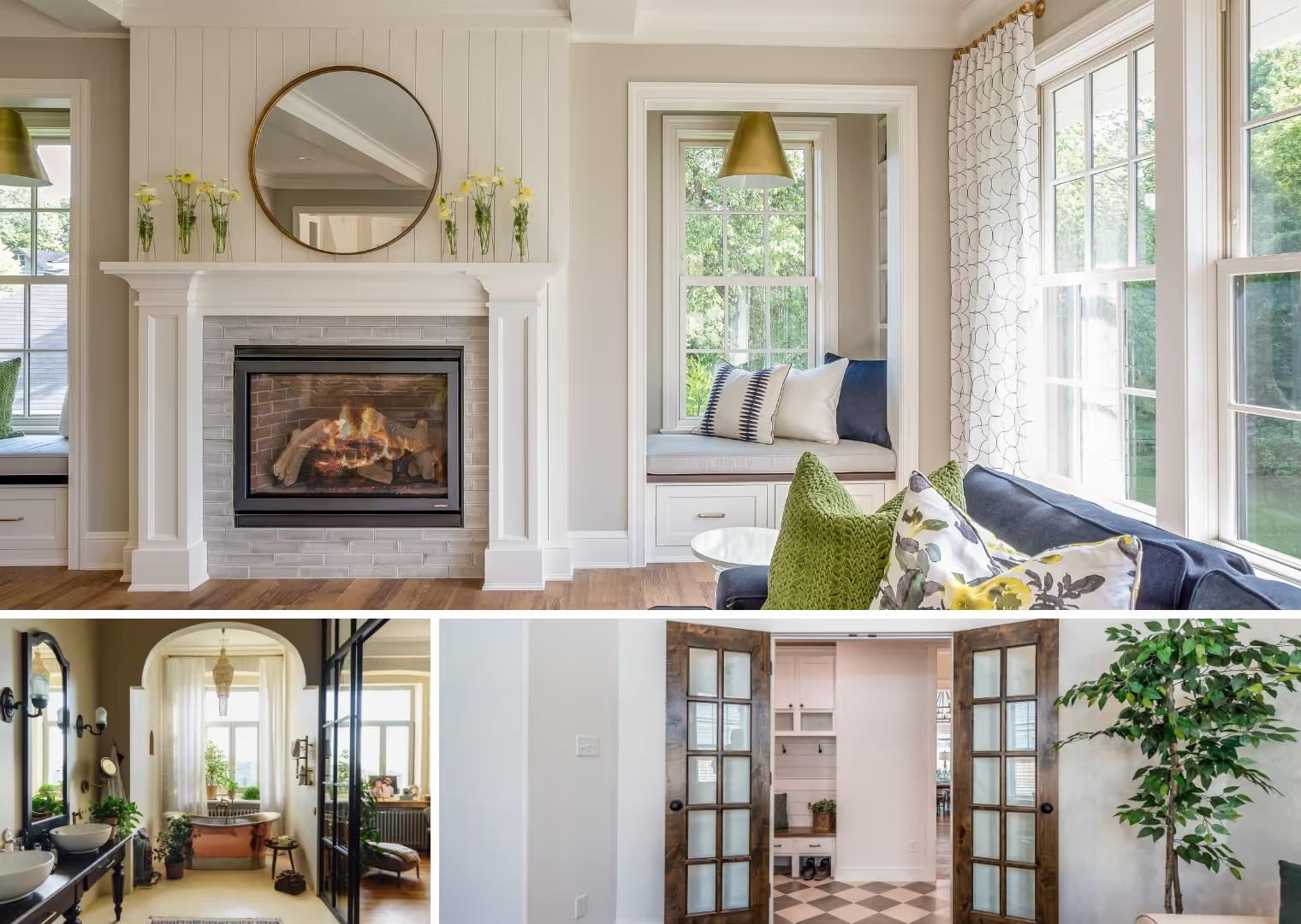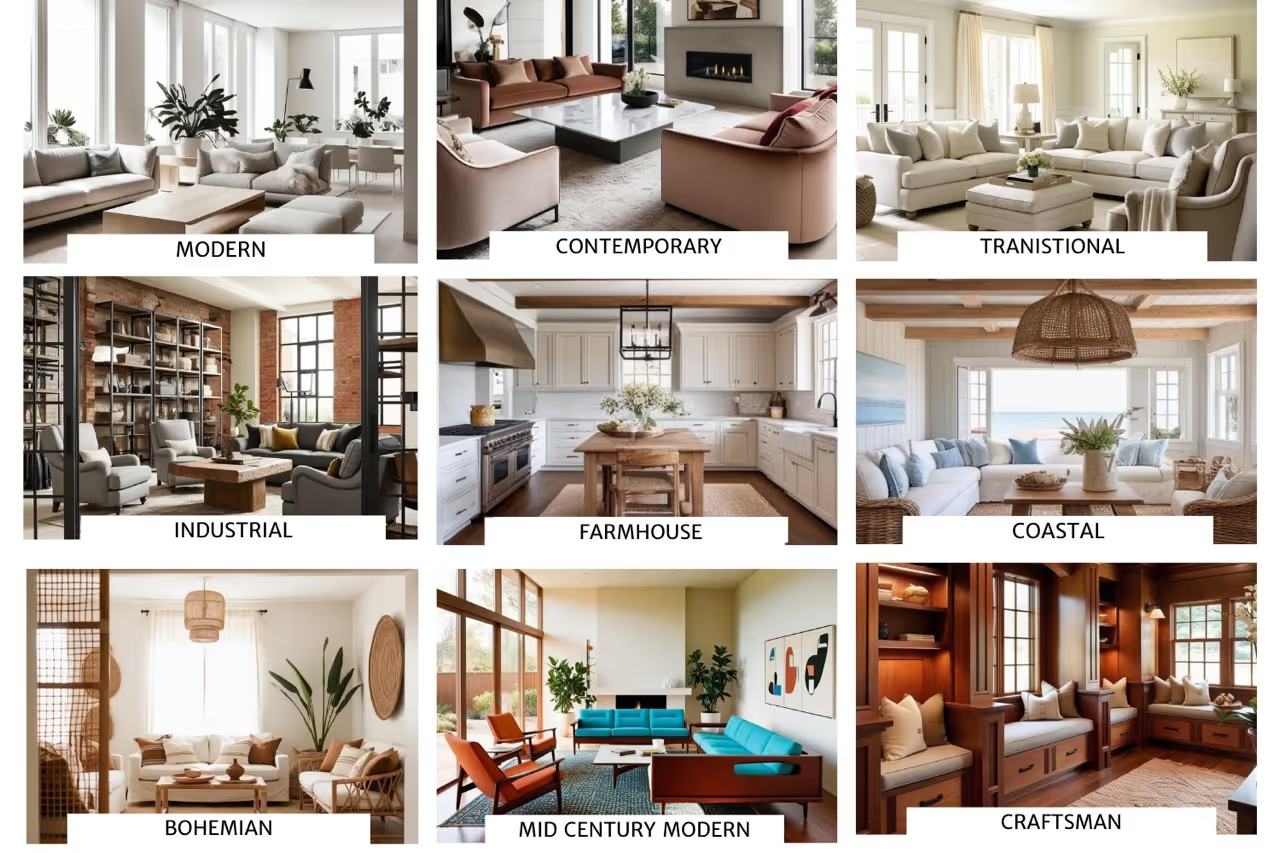
Starting a design project is an exciting step, but if you’ve never worked with an interior designer before, you may be wondering how to prepare or what’s expected of you. The good news is that you don’t need all the answers before you begin.
The most successful design collaborations happen when clients come in with openness and just enough preparation to help their designer understand who they are and how they live. Whether you’re redesigning one room or your entire home, here are a few helpful ways to prepare to work with a designer.
Begin by saving home design inspirations of rooms, places, and colors you love, even if you don’t know exactly why you love them. Whether it’s a Pinterest board, Instagram saves, screenshots, or a Houzz ideabook, collecting visuals gives your designer insight into your taste and preferences.
When looking at images, focus on how the spaces make you feel and identify what you want for your home. Are you looking for a calm, energized, cozy, refined, airy, or dramatic feel? Your designer can help you identify the common themes or elements that connect those images and translate them into a cohesive design direction.

You don’t need to have a perfectly defined style to begin the design process. Often, inspiration comes from the everyday environments and pieces you already love. Think about places that make you feel comfortable or inspired—like a favorite hotel, restaurant, or even a friend’s home. Pay attention to what resonates with you in those spaces. Is it the color palette, the lighting, or the way the furniture is arranged?
You can also draw from your own belongings. A treasured piece of art, a family heirloom, or even a favorite fabric or rug can provide powerful insight into your personal style. These elements help your designer understand what feels authentic to you, both visually and emotionally.
Even if you only have a few photos, descriptions, or meaningful items to share, they’re incredibly useful. Your designer can use those cues to interpret your aesthetic, refine your vision, and translate it into a home that feels uniquely yours.
While you don’t need to define your design style with precision, it’s helpful to reflect on the types of spaces, architectural elements, and color palettes that resonate with you.
Do you gravitate toward clean lines and neutral tones, or do you prefer rich textures and earthy, layered warmth? Are you drawn to timeless classics, or are you open to more modern or unexpected design elements?
It’s okay if you can’t name your specific style. Many successful interiors thoughtfully blend multiple influences. A professional designer can also take those varied preferences and translate them into a personalized design that feels intentional and elevated.
Your designer will help you uncover and articulate exactly what you love. Providing them with a general sense of your style preferences, from traditional to transitional, coastal to contemporary, can help kick-start the conversation.

Designing a beautiful space is only one aspect of interior design. Great design also supports the way you live and function through your daily life. When your home aligns with your lifestyle, it doesn’t just look good, it also works better for you.
Take some time to consider:
Every household is unique, and no two families live the same way. From flow to furniture placement and storage solutions, thoughtful design should make your everyday tasks easier, not harder. When your home supports your lifestyle, you’re more likely to enjoy it longer.
Taking time to understand your specific needs helps you communicate them clearly to your designer. These insights are incredibly valuable and help your designer make recommendations for functional, high-end interiors that are both practical and personal.
Designers are here to help you maximize your interior design budget, not judge it. Being transparent about your financial comfort zone allows your designer to recommend smart investments that align with both your goals and the services you truly need and can afford. Without a budget in mind, it’s nearly impossible for a designer to begin working with a client.
A designer’s priority when speaking to a potential client is to understand which service best aligns with their needs and budget. When a designer asks about your budget, responding with “I’m not sure” may seem harmless, but it can unintentionally signal that you’re not ready to move forward.
Being open and honest about your budget from the start builds trust and sets the stage for a productive working relationship. Providing a clear range allows the designer to show you what’s possible within those parameters, and ensures the conversation is grounded in realistic expectations from the beginning.
Are you looking for guidance on what a reasonable budget range should be for your project? Take a look at our article: Essential First Steps for Starting a Home Design Project for helpful tips on setting goals, prioritizing needs, and building a realistic investment plan.
Once you’ve defined your budget, the next step is getting clear on your project priorities. It’s natural to want to hand your designer a full wishlist, but identifying what’s most important helps your designer create a clear and realistic roadmap for your project. Even if you’re not sure about every detail, having a big-picture understanding of what you want and what you value most will help your designer customize their process, prioritize what matters, and deliver the results you’re hoping for.
Working with an interior designer should be an exciting experience. A little preparation on your end helps kick off the process with clarity, inspiration, and momentum. The rest is what your designer is here for.
At Joy Edwards Design, the best spaces begin with transparency and connection. We take the time to understand your style, your story, and your needs so we can bring it all together in a space that feels beautifully and effortlessly you.
Ready to get started? Reach out today to schedule your custom interior design consultation. We can’t wait to help transform your Virginia home into a place that feels like your favorite place to be.